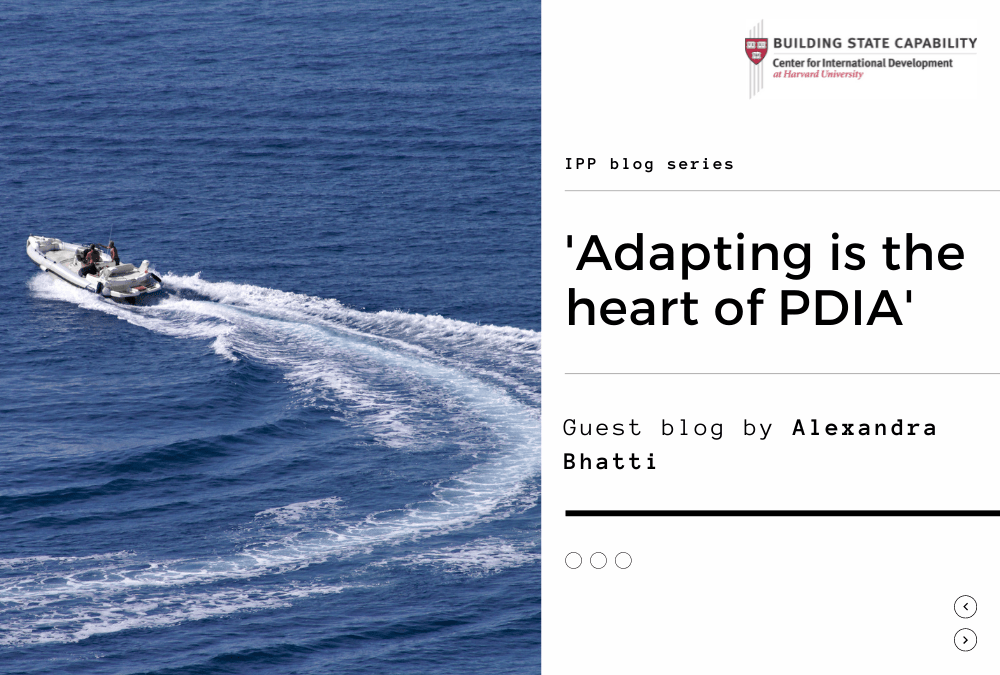Guest blog by Alexandra Bhatti
What an exciting, challenging, eye-opening learning and growing experience this has been for me. When I first explored the course, I was skeptical about the ratio of theoretical learning versus practice-based learning I would experience as I have spent many years studying “policy” and related fields. Listening to alumni feedback encouraged me to pursue the course, nevertheless. Immediately I realized this was going to be a fantastic course and it began challenging my biases and the way I approached policy development and implementation – beginning with the “challenge” I identified.
Let’s start there. My initial policy challenge was trying to operationalize non-traditional vaccine delivery sites and provider types. I soon realized that this was not the actual challenge I was trying to address and had to continue to diagnose the actual problem I was trying to solve for with vaccine delivery systems – and that was that adult vaccine uptake remains low in comparison to children and pediatrics, and further we see disparities in particular population types.
While I think the entire course has proven to be such an incredible learning and growing experience for me, there are few areas I wanted to highlight.
First understanding the pitfalls of problem and construction and deconstruction has stuck with me. Not only am I more self-aware of those pitfalls, like solution bias, I am also listening for this with my colleagues. I think this is such a critical concept to understand and implement to optimize your chance of success in policy implementation.
Second, is understanding your stakeholders and the different roles needed in policy implementation (e.g. idea people, authorizers, etc.) This helps us not only better understand and profile our stakeholders but also helps us identify gaps. It also is a great first step in understanding the priorities of the stakeholders.
Third, is the supreme importance of a compelling and succinct problem narrative that resonates with the individuals you are trying to mobilize and gain buy-in from. As a scientist and attorney, I often want to create a memo supported by evidence describing how important this policy issue is – and because I am so invested in; however, the decision-makers, whom I am engaging with 1) are not as invested – yet; 2) I have a good 5 minutes max to make my pitch and have to maximize the time I have.
Lastly, being in public health, specifically in the vaccine space, during a global pandemic has been supremely challenging. I felt the sections around time management, organizational norms and burn out, and leadership were so timely and critical for me. Not only was I trying to implement certain behavior changes (not always successfully), but I also have been sharing these concepts with my colleagues – particularly that of changing organizational norms.
Regarding progress toward my policy challenge, its been exciting that I have been able to rally leadership support around the entry points I am focusing on. What I have realized is that these different entry points are so different and complex that perhaps in the future, I would narrow my scope further. Regardless, I have a number of sub-projects underway, focused on addressing the blue boxes in the fishbone diagram here.

Already, I have integrated PDIA into my team’s workstream. Below you will see a MURAL board that I supported my team in developed and brainstorming through. As I mentioned before, having a narrower scope was one of my lessons learned moving forward. I worked with my team on discussing a policy challenge a few of my colleagues were experiencing at the state level.
We soon realized that there were two distinct challenges and each needed to have a separate root cause analyses completed. I encouraged the team to go through the 5-why, develop a fishbone, and use the triple A approach to begin to identify potential entry points. Because we went through this process, we realized there were many unknowns still and we were better positioned to identify what those were and begin to plan next steps for addressing the unknowns.

Above all, this course further underscored the importance of perseverance, grit, and flexibility when working to solve policy challenges. We are passionate about our work and often get deeply invested in it, as a result when we are faced with setbacks and delays, it can be disappointing and hard to rally, so to speak. I did not have immediate success with address my policy challenge but iterating and adapting are the heart of PDIA. My advice is to not let your personal investment in the policy challenge cloud good judgment and inhibit pivoting and changing course as needed.
Perhaps my favorite aspect of this course was the team work. Our Health Group was incredible and inspiring. We supported and encouraged each other when challenges arose and celebrated each other’s successes as well. Thank you, HKS, for this amazing and memorable experience.
This is a blog series written by the alumni of the Implementing Public Policy Executive Education Program at the Harvard Kennedy School. Participants successfully completed this 6-month online learning course in December 2020. These are their learning journey stories.
Learn more about the Implementing Public Policy (IPP) Community of Practice and visit the course website to apply.
